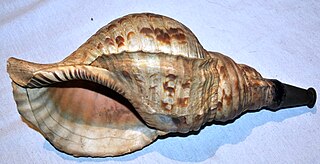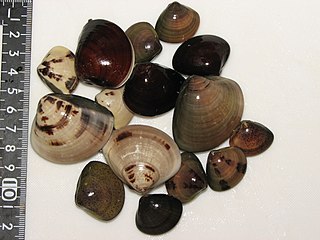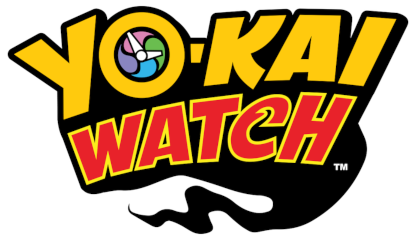
Karuta are Japanese playing cards. Playing cards were introduced to Japan by Portuguese traders during the mid-16th century. These early decks were used for trick-taking games. The earliest indigenous karuta was invented in the town of Miike in Chikugo Province at around the end of the 16th century. The Miike Karuta Memorial Hall located in Ōmuta, Fukuoka, is the only municipal museum in Japan dedicated specifically to the history of karuta.

KiKi KaiKai is a shoot 'em up video game developed and published by Taito for arcades in 1986. Since then, the game has received a number of home ports, both as a stand-alone title and as part of compilations. The bootleg version of the game is called Knight Boy.

Level-5 Inc. is a Japanese video game developer and publisher based in Fukuoka. The company was founded in October 1998 by Akihiro Hino after he departed from the now defunct Riverhillsoft. Early in its history, the company enjoyed a close relationship with Sony Computer Entertainment, with many of its games then funded by and produced in conjunction with them. Starting in 2007, the company started self-publishing its games in Japan, with other companies such as Nintendo handling publishing on the relevant platforms internationally. In more recent years, their games have been self-published. The company is best known for their Dark Cloud, Professor Layton, Inazuma Eleven, Ni no Kuni, Yo-kai Watch, and Snack World franchises.

Horagai (法螺貝) are large conch shells, usually from Charonia tritonis, that have been used as trumpets in Japan for many centuries. The instrument, which has served a number of purposes throughout Japanese history, has been given a number of Japanese names depending on its function. Special schools still teach students to play the traditional music associated with the conch.
The name Kai or Cai has various origins and meanings in different cultures:

Hard Lesbian: Quick and Deep (ハードレズビアン クイック&ディープ) is a 2005 Japanese pink film directed by Osamu Satō. It won the awards for Best Film, Eighth Place and Best New Actress at the Pink Grand Prix ceremony.

Dragon Ball Kai: Ultimate Butōden is a fighting video game based on the manga and anime series Dragon Ball for the Nintendo DS. It was released in Japan on February 3, 2011.

Uta-awase, poetry contests or waka matches, are a distinctive feature of the Japanese literary landscape from the Heian period. Significant to the development of Japanese poetics, the origin of group composition such as renga, and a stimulus to approaching waka as a unified sequence and not only as individual units, the lasting importance of the poetic output of these occasions may be measured also from their contribution to the imperial anthologies: 92 poems of the Kokinshū and 373 of the Shin Kokinshū were drawn from uta-awase.

Meretrix lusoria, the hamaguri, Asian hard clam or common Orient clam, is a species of saltwater clam, a marine bivalve mollusk in the family Veneridae, the Venus clams. This species is native to Asia, found along water beds and the coastal waters of China, Korea and Japan. It is commercially exploited for sushi, and its shells are traditionally used to make white go stones.
E-awase was a pastime popular among Japanese nobles during the Kamakura period, although its history dates back to the Heian.

Dragon Ball Z is a Japanese anime television series produced by Toei Animation. It is the sequel to Dragon Ball and adapts the latter 325 chapters of the original 519-chapter Dragon Ball manga series created by Akira Toriyama which ran in Weekly Shōnen Jump from 1988 to 1995. Dragon Ball Z aired in Japan on Fuji TV from April 1989 to January 1996, before getting subtitled or dubbed in territories including the United States, Canada, Australia, Europe, Asia, India and Latin America. It was broadcast in at least 81 countries worldwide. It is part of the Dragon Ball media franchise.

Yo-kai Watch is a mixed-media franchise of role-playing video games and toys, created and developed by Level-5. The first game in the series was released for the Nintendo 3DS in 2013. 3 main sequels and several spinoffs, on both Nintendo and mobile platforms, have been released. In December 2019, they expanded to PlayStation with the release of Yo-kai Watch 4++.

Ghost in the Shell: The New Movie, also known as Ghost in the Shell: Arise − The Movie or New Ghost in the Shell, is a 2015 Japanese animated science fiction film directed by Kazuya Nomura. A continuation of the Ghost in the Shell: Arise story arc, The New Movie is the latest film in the series produced by Japanese studio Production I.G., and the first feature since Ghost in the Shell SAC: Solid State Society in 2006. The film is a continuation to the plot of the Pyrophoric Cult episode of Arise, and ties up loose ends from that arc.

Yo-kai Watch is a role-playing video game developed and published by Level-5 for the Nintendo 3DS and the first game in the Yo-kai Watch franchise. Originally released in Japan on July 11, 2013, the game is based on the Yōkai of Japanese folklore, who are said to be ghosts and apparitions that cause mischief in daily life. In Yo-kai Watch, player character Nathan "Nate" Adams or Katie Forester, depending on who the player chooses, is given the titular watch, which gives him or her the ability to see Yo-kai, after stumbling across and befriending a butler Yo-kai named Whisper. Players assume the role of Nate or Katie, as he or she travels around town searching for and befriending peaceful Yo-kai, battling hostile Yo-kai, and solving problems caused by mischievous Yo-kai.

Yo-kai Watch 2: Bony Spirits and Yo-kai Watch 2: Fleshy Souls are a pair of 2014 role-playing video games developed and published by Level-5 for the Nintendo 3DS. The games are a sequel to 2013's Yo-kai Watch, and were released in July 2014 in Japan, in North America and Australia in late 2016, and in Europe in 2017. Much like their predecessor, the games put players in an open world, befriending and battling various yōkai, which are ghosts and apparitions originating in Japanese folklore, that cause mischief in daily life. In Yo-kai Watch 2, the memories of the protagonists Nathan "Nate" Adams and Katie Forester are erased when their Yo-kai Watch is stolen, leaving them with no recollection of their past adventures. However, they soon stumble across their Yo-kai butler Whisper once again, and their adventures resume.

Summer Pockets is a Japanese visual novel developed by Key, a brand of Visual Arts. It was released on June 29, 2018 for Windows and is rated for all ages. Summer Pockets is Key's 13th game, along with other titles such as Kanon, Air, and Clannad. It has been ported to iOS and Android devices, and the Nintendo Switch. An English version for Windows was released by Visual Arts in 2020. An expanded version of the game titled Summer Pockets Reflection Blue was also released on June 26, 2020 in Japan. The story is set on a fictional island on the Seto Inland Sea and follows the life of Hairi Takahara, a young man who uses the recent death of his grandmother as an excuse to escape to the island after an unpleasant incident. Once there, he gets to know the townsfolk of Torishirojima and multiple girls who are the focus of the story.

Yo-kai Watch 4 is a role-playing video game developed and published by Level-5 for the Nintendo Switch. As indicated by the name, it is the fourth game of the main series of Yo-kai Watch video games; unlike the preceding Yo-kai Watch 3, 4 was initially released only as a single version for the Japan region on June 20, 2019. An enhanced version named Yo-kai Watch 4++ was released for the Switch and PlayStation 4 in Japan on December 5, 2019.

Yo-kai Watch 3 is a role-playing video game developed and published by Level-5 for the Nintendo 3DS. As indicated by the name, it is the third game of the main series of Yo-kai Watch video games, initially released in two versions, branded Sushi and Tempura in Japan in July 2016. A third version of the game, branded Sukiyaki, was released in Japan in December 2016, adding minor enhancements upon the original versions of the game. An English version based on Sukiyaki was released in PAL regions in December 2018, and in North America two months later. Yo-kai Watch 3 is the first mainline Yo-kai Watch game not to be localized in Korean.

Yo-kai Watch: Wibble Wobble was a mobile puzzle spin-off title to the Yo-kai Watch video game series. As announced on April 2, 2018, the English versions of the game permanently shut down on May 31, 2018.

















